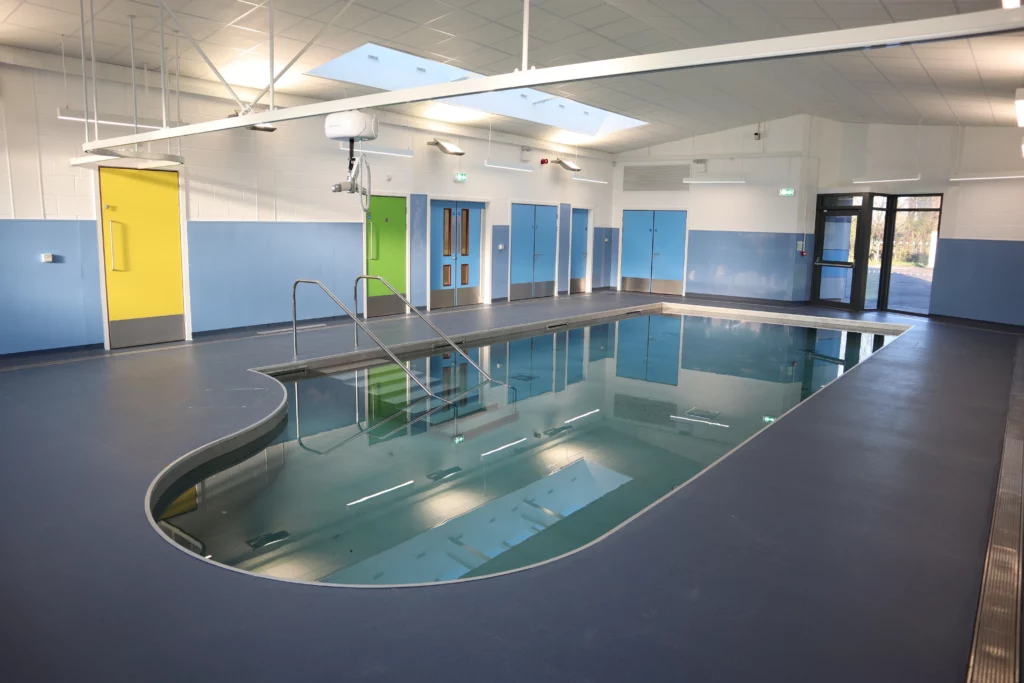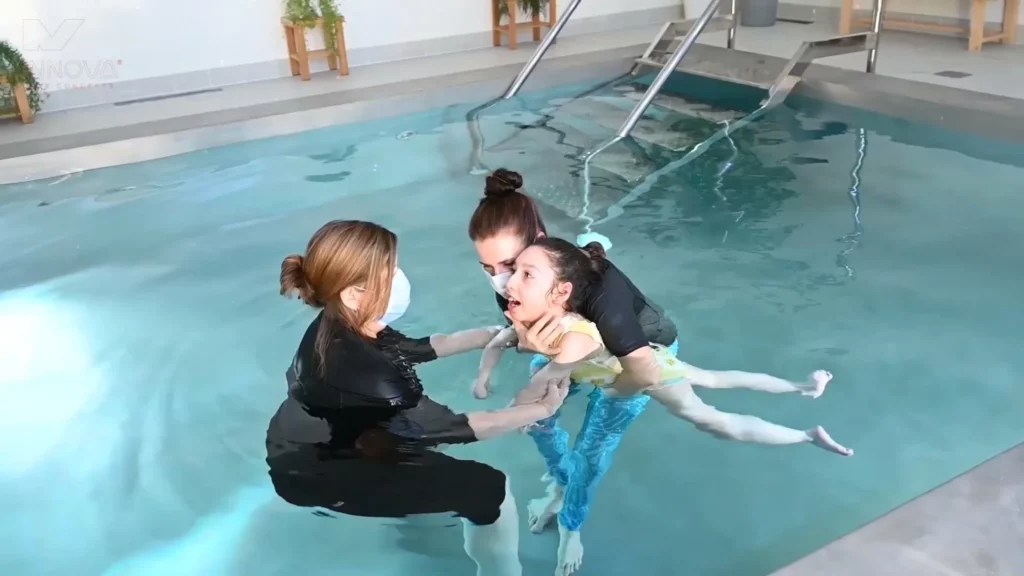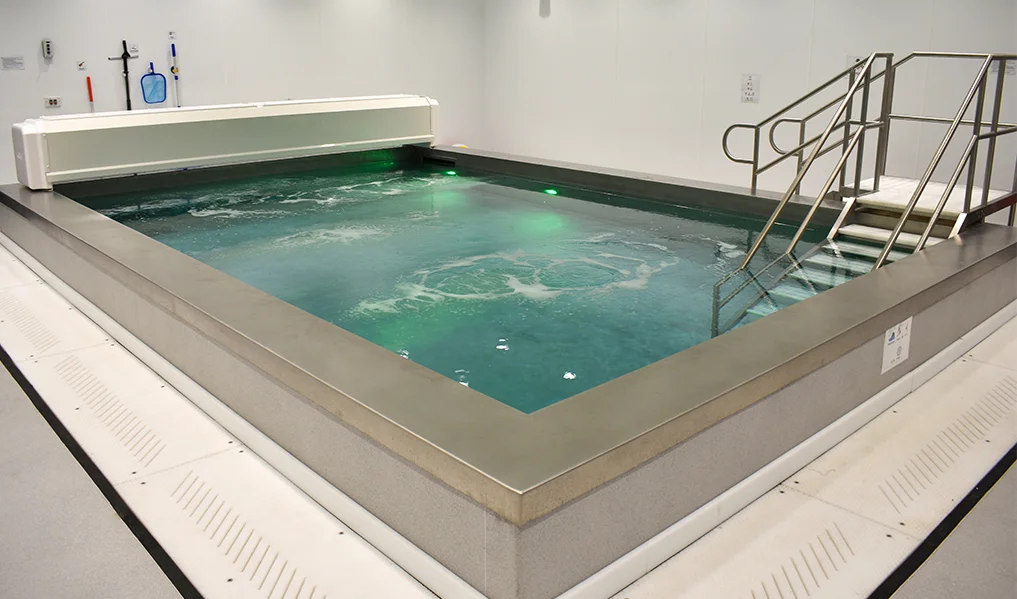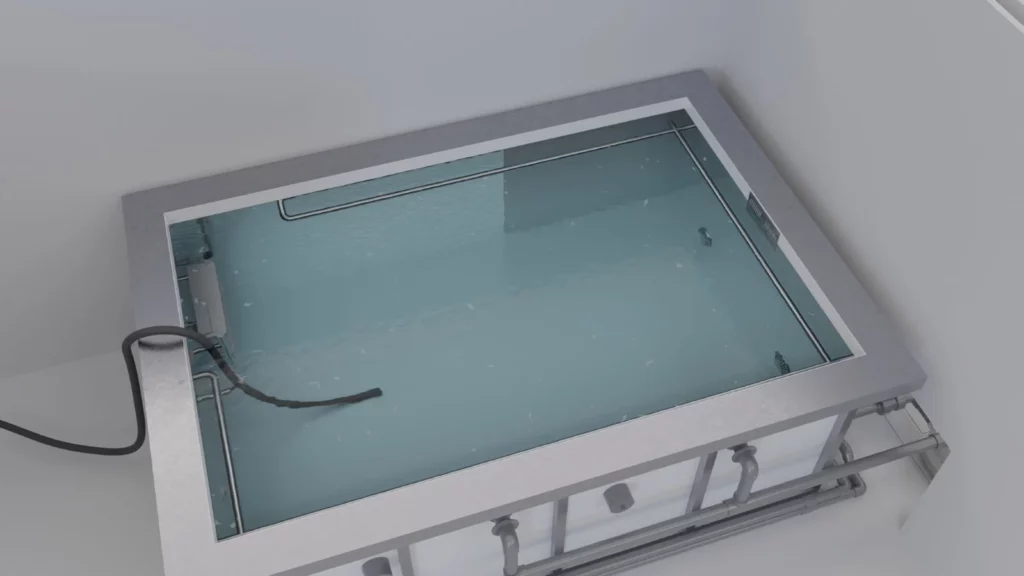What is a hydrotherapy pool?
When someone is looking to experience hydrotherapy or aquatic physiotherapy, they often speak to care professionals about hydrotherapy pools. As a form of exercise that requires a facility that harnesses the properties of water, many people assume that a bath or a swimming pool will suffice – but that isn’t the case!
To help you have a clear idea of what a hydrotherapy pool is, how they help enhance wellbeing and the options available, we’ve put together a quick guide.
What is a hydro pool?
Unlike a swimming pool, hydrotherapy pools are kept at a temperature of around 33C to 36C. This is to aid hydrotherapy treatment, where special exercises in warm water focus on slow, controlled movement and relaxation. A typical swimming pool is heated to around 20C – 25C, whereas a hydrotherapy pool is a lot warmer, requiring extra considerations to be taken for the plant room and filtration system.
Not only do hydro pools differ in temperature, they also have built-in massaging jets and water features designed to boost wellness. This is where hydrotherapy as a treatment can be used for different purposes. For instance, in a spa setting, hydrotherapy will often be provided via Jacuzzis, hot tubs and whirlpools, all of which use pumps and jets to circulate the warm water.

Stainless steel hydrotherapy installed by Innova at Kingfishers SEN School
In this context, you simply relax and let the water work its magic. However, when looking at providing hydrotherapy exercises for those seeking rehabilitation, or helping individuals with muscle movement and pain management, a hydrotherapy pool is essential.
At around 33C to 36C, not only does a hydro pool provide the correct temperature for aquatic physiotherapy, as recommended by the ATACP, it also gives enough space for an individual to be supported by a carer to carry out aquatic exercises like water walking and arm raises.
What are the benefits of using a hydrotherapy pool?
With the help of an aquatic pool facility, users can experience a range of benefits. Using the combination of warm water and massage jets, hydrotherapy exercises can work to soothe aching muscles and ease any joint pain.
For those requiring rehabilitation from serious injury or with complex care needs, the use of massage jets are good for stimulating the lymphatic system and flushing out nasty toxins. This means a pool can be externally beneficial for those with the following conditions:
- People who have suffered spinal injuries
- Children and young adults with learning difficulties and/or physical disabilities
- People living with Arthritis
- Athletes who are overcoming injuries

Hydrotherapy can have huge benefits for those with complex disabilities, helping with mobility, pain management and wellbeing
To see which exercises are involved during hydrotherapy, have a read of our blog – Exercises to do in a hydrotherapy pool
Are there different types of hydrotherapy pools?
When it comes to professional aquatic therapy treatment, filtration is the key differentiator when choosing which type of pool to go for. Depending on where your pool is going to be installed, the main options are between a skimmer design or an overflow design to filter the pool.
Skimmer Hydro Pools
A skimmer or ‘freeboard’ hydro pool is where water sits slightly below the pool’s edge. This typically leaves a several inch gap, where two to four skimmer devices are then placed around the edge of the pool. Using these devices, water is drawn in from the pool and fed it into the filtration system, which is then pumped back into the pool.

Skimmer hydrotherapy pool
Skimmer pools primarily uses its filters to capture floating debris before it can sink to the bottom of the pool. Unlike an overflow pool, a skimmer does not require a separate balancing tank so it is much cheaper and quicker to construct. In fact, overflow pools tend to be anywhere between 15-20% more expensive due to the inclusion of the drain channel, the channel cover and the construction and installation of the balance tank.
As a result, skimmer pools tend to be installed into people’s homes due to being more cost-effective.
Read Designing Hydrotherapy Pools for Domestic Use
Overflow Hydro Pools
When dealing with a commercial hydrotherapy pool installation, an overflow or ‘deck level’ pool is required. This is because an overflow has a higher level of filtration efficiency as water is taken from the entire perimeter of the pool, not just in selected sections where the skimmers are situated.
With these types of filtration design, the entire perimeter of the pool is surrounded by an overflow channel. The channel is typically covered with plastic grating, though a common trend is to cover the drainage channel with more high-end materials or a luxury finish.
In terms of the filtration process, the water ‘overflows’ into drainage channels all around the pool’s edge. This is where a balancing tank is required to take in the water from the drainage channels. To complete the process, the water then enters the main filtration system, before being pumped back into the hydrotherapy pool.

Overflow hydrotherapy pool
How is a hydrotherapy pool installed?
We’ve looked at what a hydrotherapy pool is, but ever wondered about how they are installed? Designing, building and installing any sort of pool requires precision and expertise. Luckily with Innova, we have over 10 years of experience in delivering state-of-the-art hydro facilities.
In order to make the process as stress-free as possible, we’ve broken down the entire workflow into one handy video! Our ‘How to install a Hydrotherapy Pool’ guide provides a visual representation of each stage of the process, breaking down the different elements of a typical pool installation with Innova.
Here is a quick list of the installation phases show in the video:
- Design
- Construction
- Delivery
- Plant Room Installation
- Safety
- Fill Up and Commissioning
- Training and Handover
You can watch our pool installation guide on our hydrotherapy pool page.
Summary
In this blog, we’ve delivered an overview of what is a hydrotherapy pool. We’ve taken a look at how they differ from a standard swimming pool, how they benefit those that use them and the types of pool filtration available.
If you are looking for more information on the benefits of hydrotherapy or how we can support you with a hydro facility solution, complete the form below.
Other blogs you may be interested in
What is the Hydrotherapy Pool installation process?
Can we help with anything?
Be sure to use the contact form and reach out to us if you have any questions about the content above.
